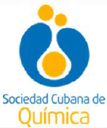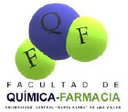Executive Secretary

VII Simposio Internacional de Química 2019
SIQ 2019
The mathematical modeling of the interactions pollutant-decontaminant agents is a tool of recent use to facilitate the management of hydric resources in the environment. The present work studies the interactions between two pesticides of high environmental stability that cause severe affectations to health: chlordecone (CLD) and β-hexachlorocyclohexane (β-HCH), with the most common cyclodextrins (α-, β-, and γ-CDs) and the formation of their nanoaggregates by guest-host complexation. The reaction of formation of these molecular inclusion complexes is addressed in this research, as well as the main types of complexes that could be obtained. The Multiple Minima Hypersurface methodology, quantum chemistry calculations based on the Density Functional Theory and a topological study of the electron density were employed in order to characterize the interaction space of the two pollutants with the symmetrical conformers of the three CDs. The Basis Set Superposition Error existent in the DFT calculations was mitigated using a thermodynamic cycle proposed by the authors. Finally for the β-HCH@CDs complexes a study of the charge distribution, charge transfer and dual descriptor was employed to elucidate the forces involved in the formation of these nanoaggregates. Three types of fundamental interactions were observed: total occlusion, partial occlusion and external interaction (non-occlusion). The more stable complexes were obtained when the γ-CD is the host molecule, as it was confirmed experimentally by means of spectroscopic results. These results suggest the utility of these complexes in the separation of these pollutants and the possibility of using CDs for the management, purification and treatment of water.
The mathematical modeling of the interactions pollutant-decontaminant agents is a tool of recent use to facilitate the management of hydric resources in the environment. The present work studies the interactions between two pesticides of high environmental stability that cause severe affectations to health: chlordecone (CLD) and β-hexachlorocyclohexane (β-HCH), with the most common cyclodextrins (α-, β-, and γ-CDs) and the formation of their nanoaggregates by guest-host complexation. The reaction of formation of these molecular inclusion complexes is addressed in this research, as well as the main types of complexes that could be obtained. The Multiple Minima Hypersurface methodology, quantum chemistry calculations based on the Density Functional Theory and a topological study of the electron density were employed in order to characterize the interaction space of the two pollutants with the symmetrical conformers of the three CDs. The Basis Set Superposition Error existent in the DFT calculations was mitigated using a thermodynamic cycle proposed by the authors. Finally for the β-HCH@CDs complexes a study of the charge distribution, charge transfer and dual descriptor was employed to elucidate the forces involved in the formation of these nanoaggregates. Three types of fundamental interactions were observed: total occlusion, partial occlusion and external interaction (non-occlusion). The more stable complexes were obtained when the γ-CD is the host molecule, as it was confirmed experimentally by means of spectroscopic results. These results suggest the utility of these complexes in the separation of these pollutants and the possibility of using CDs for the management, purification and treatment of water.
Sobre el ponente

Mr. Anthuan Ferino Pérez






